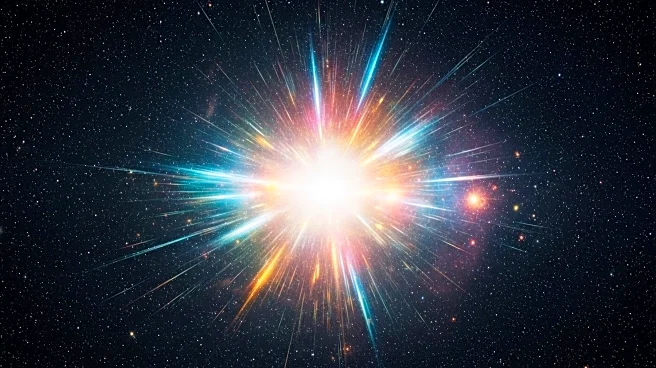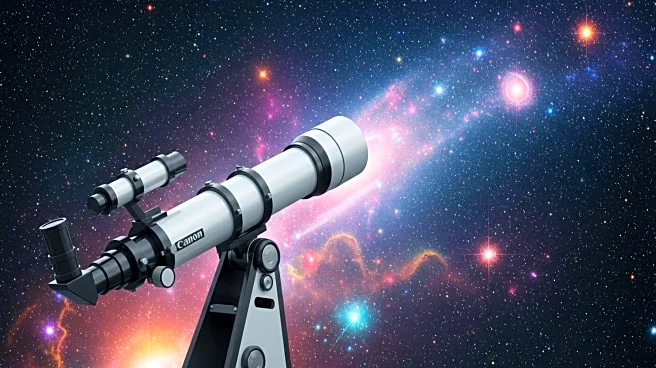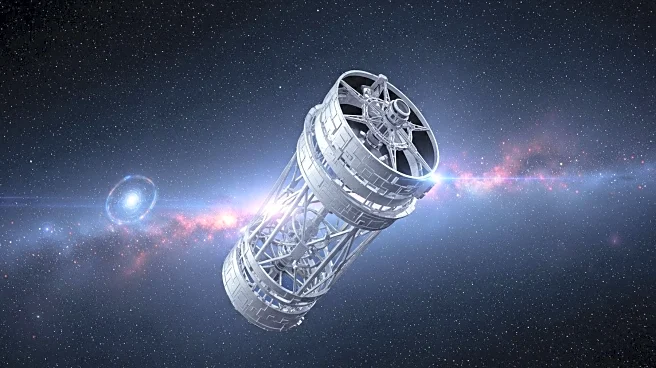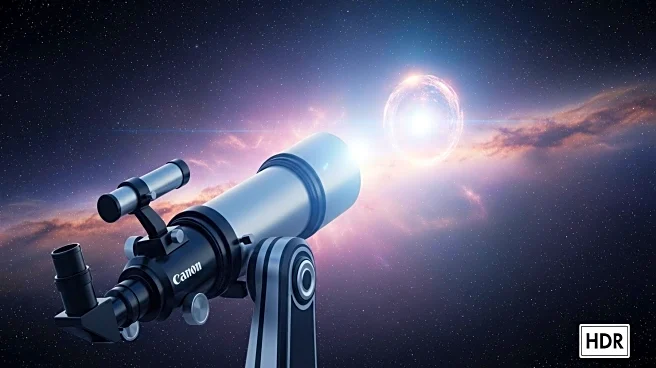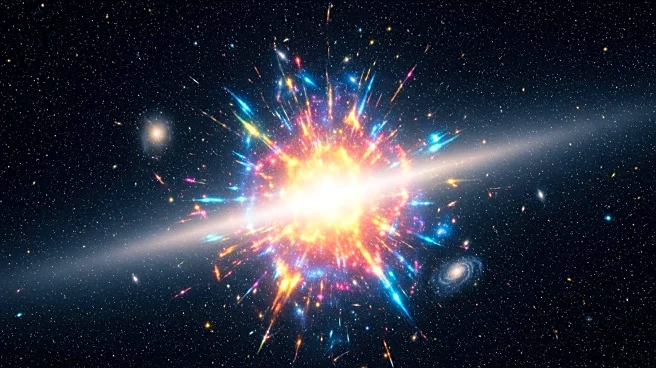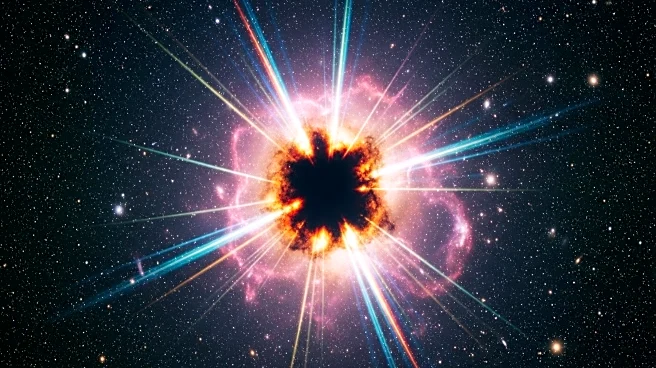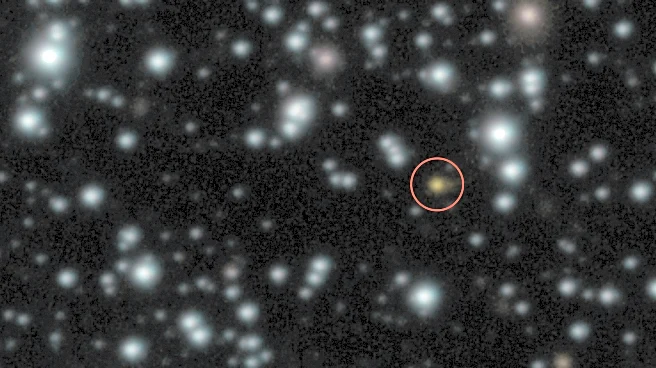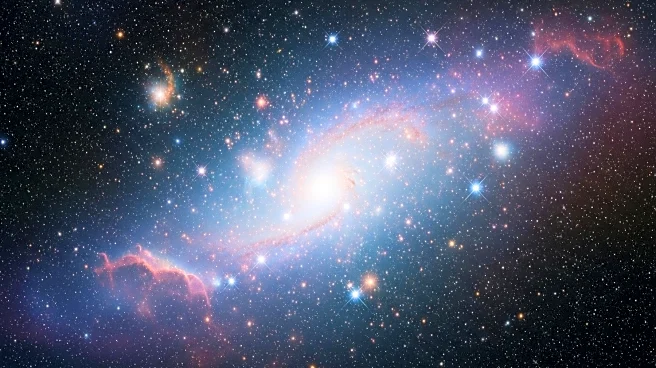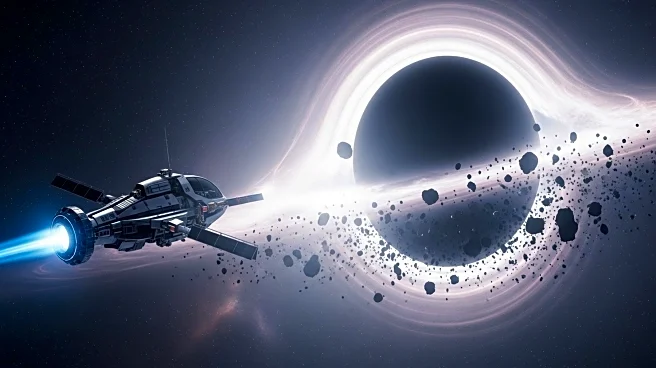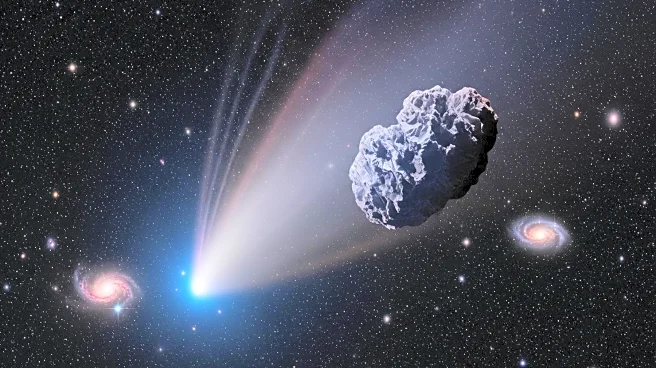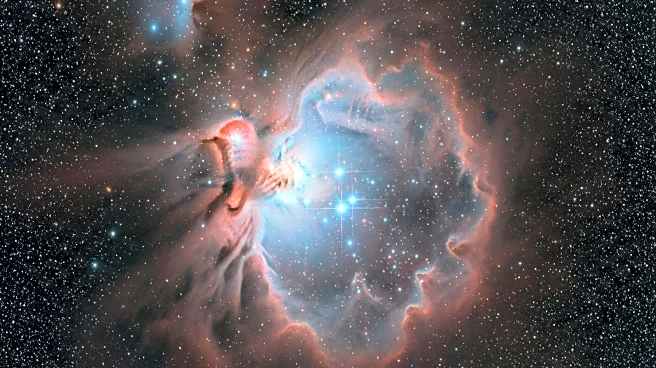What is the story about?
What's Happening?
Astronomers have observed a gamma-ray burst (GRB) named GRB 250702B, which has defied conventional understanding due to its unusually long duration and repetitive nature. Typically, GRBs last from milliseconds to several minutes, emerging from massive stars exploding in supernovas or being torn apart by black holes. However, GRB 250702B lasted for about a day and repeated several times over the course of a day. The burst was detected by NASA's Fermi Gamma-ray Space Telescope and later confirmed by the Einstein Probe team. Initially thought to originate from within the Milky Way, follow-up observations with the Hubble Space Telescope suggest it came from a galaxy several billion light-years away. Researchers propose that the burst may involve a white dwarf being consumed by an intermediate black hole, a rare and poorly understood class of black holes.
Why It's Important?
The discovery of GRB 250702B challenges existing theories about gamma-ray bursts and their origins. If the burst indeed originated from an extragalactic source, it implies a level of power and energy far beyond typical GRBs. This finding could lead to new insights into the behavior of black holes and the lifecycle of stars. Understanding such phenomena is crucial for astrophysics, as it may reveal unknown aspects of cosmic events and the fundamental forces at play in the universe. The research could also impact the study of gravitational behavior and the classification of black holes, potentially leading to advancements in space exploration and technology.
What's Next?
Researchers are continuing to investigate the source and nature of GRB 250702B. Further observations and studies are needed to confirm the proposed scenario involving a white dwarf and an intermediate black hole. The scientific community is likely to focus on understanding the gravitational interactions and the conditions that led to such a unique event. Future research may involve more detailed analysis using advanced telescopes and collaboration across international space agencies to gather more data and refine existing models of gamma-ray bursts.
Beyond the Headlines
The detection of GRB 250702B may have broader implications for the study of cosmic phenomena and the universe's evolution. It raises questions about the limits of current astrophysical models and the potential existence of unknown cosmic entities. The event could inspire new theoretical frameworks and stimulate interest in exploring the mysteries of space, potentially leading to breakthroughs in understanding the universe's origins and its ultimate fate.
AI Generated Content
Do you find this article useful?
